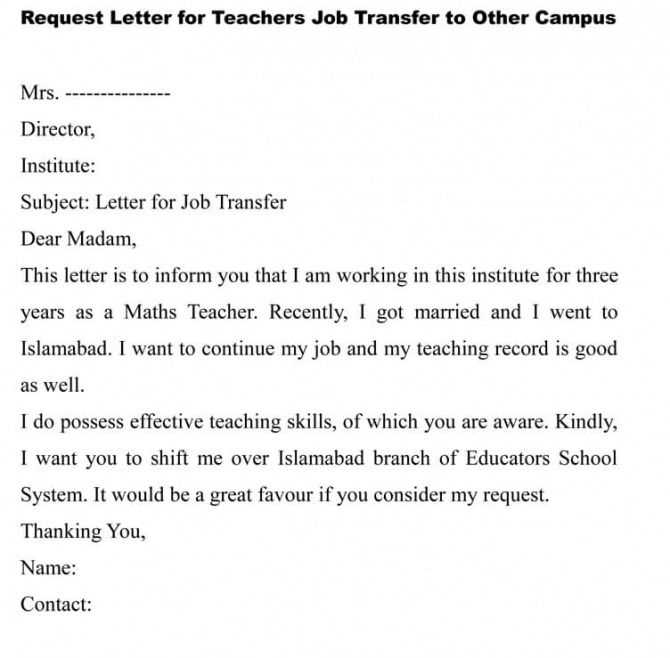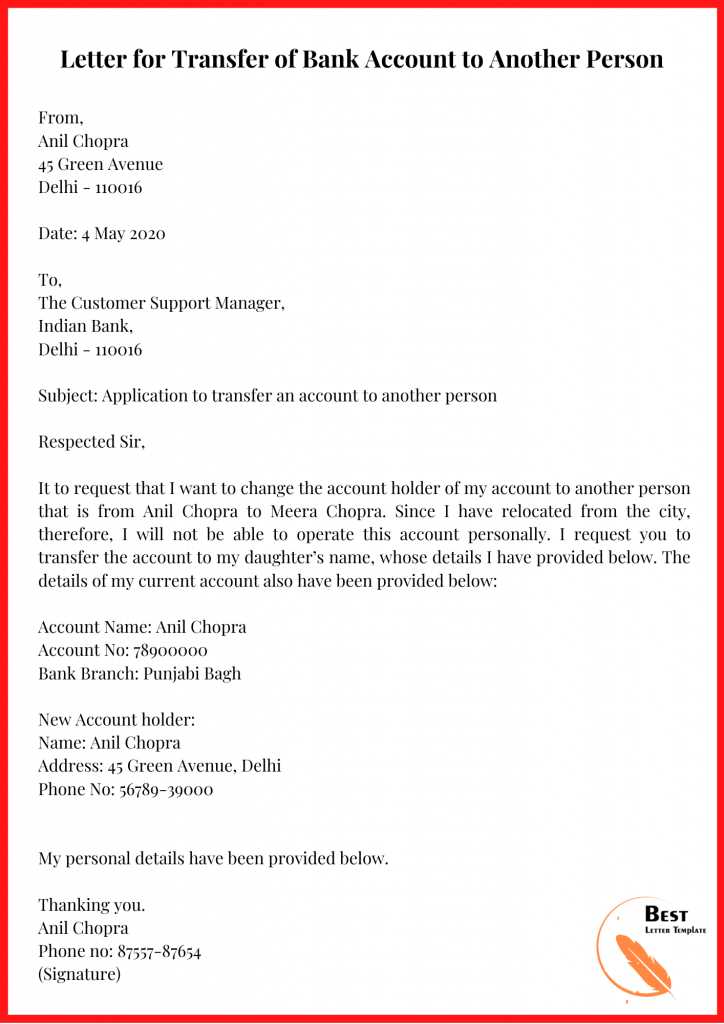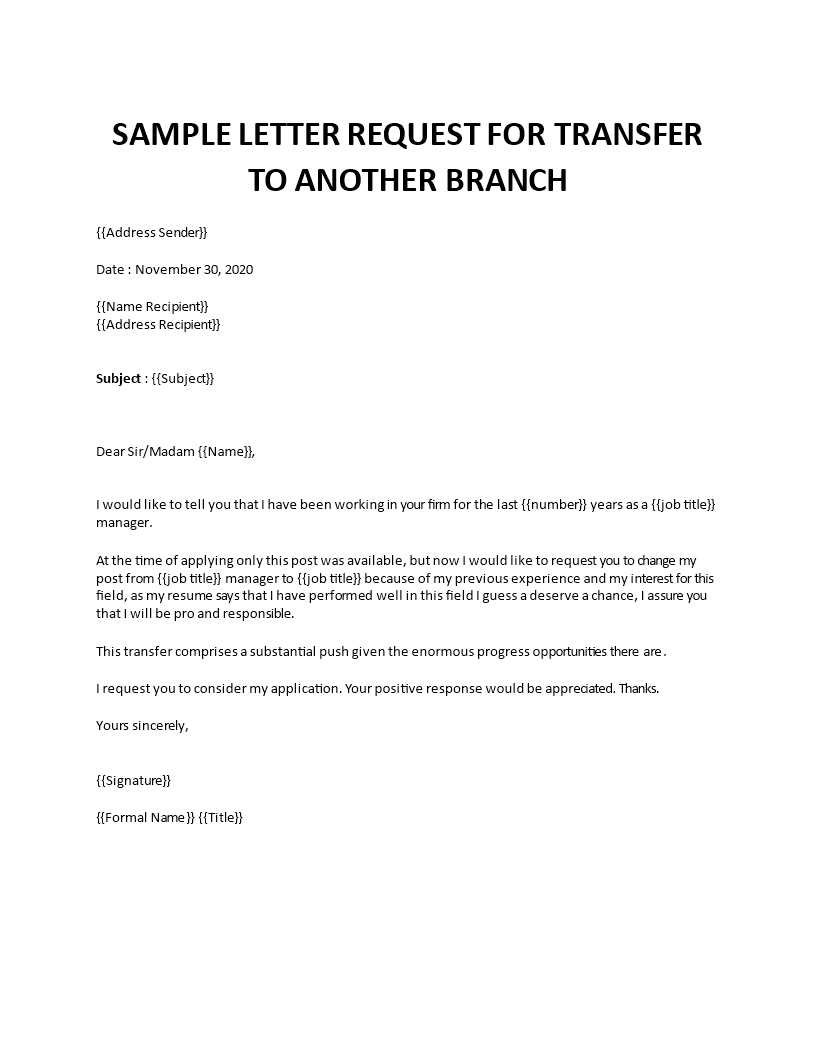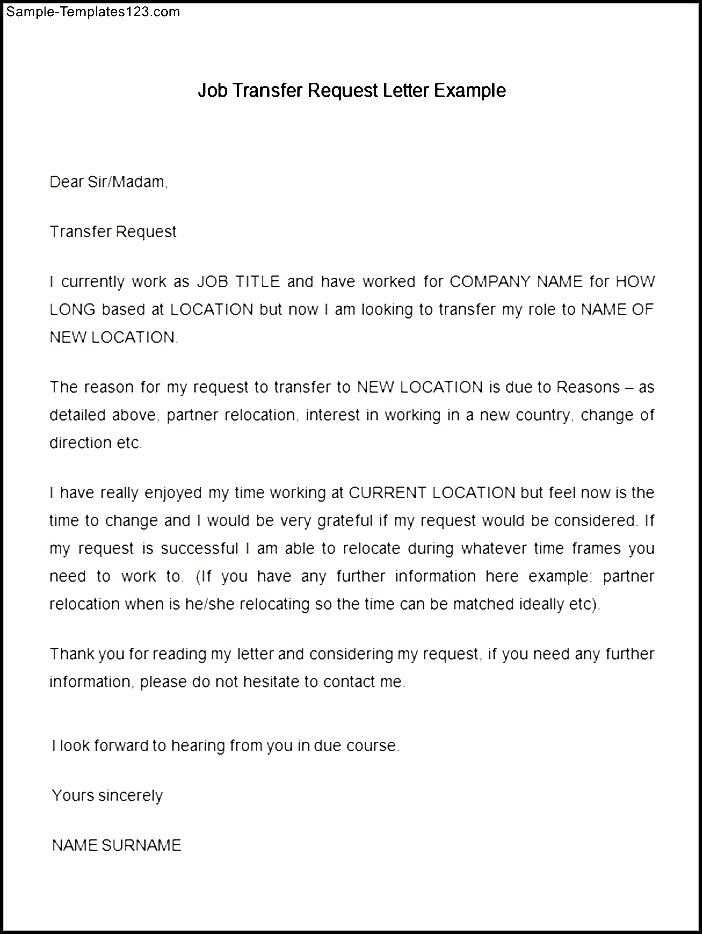Transfer Request Letter Template for Job Relocation

When an individual seeks to change their current role or move to a different location within the same organization, crafting a well-structured formal communication is essential. This document serves as an official appeal, outlining the reasons behind the desired change and emphasizing the benefits to both the employee and the company.
Key Components of a Formal Appeal
To ensure your appeal is well-received, it’s crucial to include specific information that provides clarity and demonstrates professionalism. The essential components typically include:
- Clear explanation of the need for change – Briefly describe the motivation behind your decision to seek a new role or location.
- Positive tone – Maintain a respectful and optimistic tone throughout the message.
- Understanding of company goals – Express your commitment to supporting the organization’s objectives in your new role.
- Proposed solutions – Suggest feasible solutions or a smooth transition plan to address potential challenges.
Structure of the Communication

The arrangement of the content plays a significant role in ensuring the message is clear and well-organized. The basic structure typically includes:
- Introduction: Begin by introducing yourself and the purpose of your communication.
- Reasoning: Provide a brief but convincing explanation for your request, focusing on its alignment with the company’s interests.
- Conclusion: Conclude by expressing gratitude for considering your request, and suggest a follow-up meeting if needed.
Example Scenarios for Relocation Requests

Different situations may call for distinct approaches when framing your appeal. Here are some common scenarios:
- Job role change – A request to transition into a different position within the organization that aligns more closely with your skills and career goals.
- Location shift – Moving to another office or branch in response to personal or professional reasons, such as relocation closer to family or taking on a new project.
- Team reassignment – A desire to contribute to a new team or department that better suits your strengths and interests.
Tips for Making Your Appeal Stand Out
To maximize the effectiveness of your communication, keep the following tips in mind:
- Be concise – Avoid unnecessary details that could detract from your key message.
- Show empathy – Acknowledge the potential challenges your request may present and demonstrate your flexibility.
- Express your commitment – Reinforce your enthusiasm for continuing to contribute to the organization in a new capacity.
Relocation Appeal Overview

When seeking a role change or move within an organization, it is important to present a clear, respectful, and well-structured communication. This formal message serves to explain the reason for the change and outline how it benefits both you and the company.
Key Elements to Include
In your formal communication, be sure to highlight the following:
- Reason for the change – Clearly state why you’re seeking this transition, emphasizing how it aligns with personal or professional growth.
- Company benefits – Show how the move could enhance your contributions to the organization.
- Proposed plan – Include a suggested timeline and transition process to make the shift smoother.
How to Organize the Communication
Structure your message logically to ensure it is concise and effective:
- Introduction – State your purpose clearly and briefly.
- Details – Present your reasons for the change and how it aligns with your and the company’s goals.
- Conclusion – End with a polite request for consideration and an offer for further discussion if necessary.
Common Mistakes to Avoid
To enhance the professionalism of your communication, avoid these common errors:
- Being vague – Avoid being unclear about why you want the change.
- Too much detail – Stick to the key points and keep it concise.
- Overly casual tone – Maintain professionalism throughout.
Examples of Relocation Appeals
It can be helpful to look at sample communications to understand how to structure your own:
- Example 1: A request for a different team role to better match skills.
- Example 2: A move to a different office location for personal or professional reasons.
- Example 3: A shift to a managerial position to take on more responsibility.
Effective Persuasion Techniques
To make your communication more persuasive, consider these strategies:
- Clarity – Be straightforward about what you want and why.
- Empathy – Acknowledge the potential challenges and express your flexibility in addressing them.
- Confidence – Show enthusiasm about the transition and your continued commitment to the organization.
Following Up Successfully
After sending your formal communication, it’s important to follow up to ensure your request is considered. Be polite and respectful in your follow-up, expressing your willingness to discuss further or answer any questions.